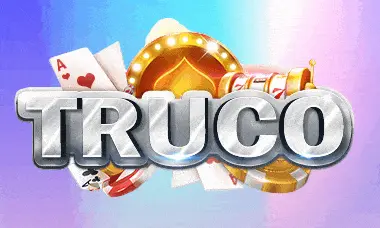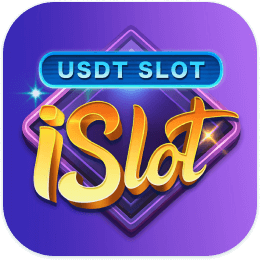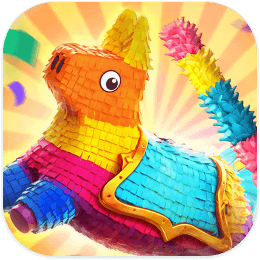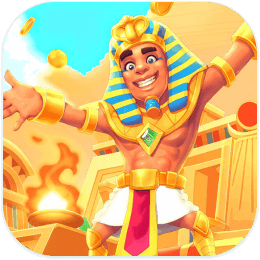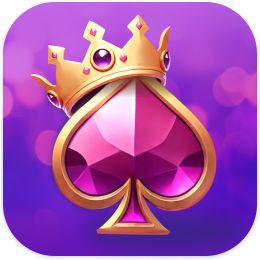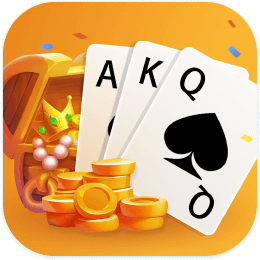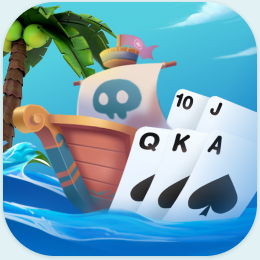Online Learning Platforms: The Different Types And Their Benefits – Forbes Advisor

Want to make the most of online learning platforms? We have you covered. Explore the different types of online platforms and modalities with our guide. 
 Christin PerryContributorChristin Perry is a freelance writer whose work has appeared in numerous outlets, including WeddingWire, The Knot, Parents and Verywell Family. When she’s not working, Christin enjoys reading, gardening and hanging out with her husband and four young…
Christin PerryContributorChristin Perry is a freelance writer whose work has appeared in numerous outlets, including WeddingWire, The Knot, Parents and Verywell Family. When she’s not working, Christin enjoys reading, gardening and hanging out with her husband and four young…See Full Bio
 Christin PerryContributorChristin Perry is a freelance writer whose work has appeared in numerous outlets, including WeddingWire, The Knot, Parents and Verywell Family. When she’s not working, Christin enjoys reading, gardening and hanging out with her husband and four young…
Christin PerryContributorChristin Perry is a freelance writer whose work has appeared in numerous outlets, including WeddingWire, The Knot, Parents and Verywell Family. When she’s not working, Christin enjoys reading, gardening and hanging out with her husband and four young…See Full BioWritten ByChristin Perry
 Christin PerryContributorChristin Perry is a freelance writer whose work has appeared in numerous outlets, including WeddingWire, The Knot, Parents and Verywell Family. When she’s not working, Christin enjoys reading, gardening and hanging out with her husband and four young…
Christin PerryContributorChristin Perry is a freelance writer whose work has appeared in numerous outlets, including WeddingWire, The Knot, Parents and Verywell Family. When she’s not working, Christin enjoys reading, gardening and hanging out with her husband and four young…See Full Bio
 Christin PerryContributorChristin Perry is a freelance writer whose work has appeared in numerous outlets, including WeddingWire, The Knot, Parents and Verywell Family. When she’s not working, Christin enjoys reading, gardening and hanging out with her husband and four young…
Christin PerryContributorChristin Perry is a freelance writer whose work has appeared in numerous outlets, including WeddingWire, The Knot, Parents and Verywell Family. When she’s not working, Christin enjoys reading, gardening and hanging out with her husband and four young…See Full BioContributor Ilana HamiltonUpdate Editor, EducationWith five years of experience as a writer and editor in the higher education and career development space, Ilana has a passion for creating accessible, relevant content that demystifies the higher-ed landscape for traditional and nontraditional learn…
See Full Bio

See Full Bio-
Ilana HamiltonIlana HamiltonUpdate Editor, EducationWith five years of experience as a writer and editor in the higher education and career development space, Ilana has a passion for creating accessible, relevant content that demystifies the higher-ed landscape for traditional and nontraditional learn…See Full Bio-

See Full Bio-
Reviewed
|Update Editor, Education & 1 otherUpdated: Aug 27, 2024, 5:37am
Editorial Note: We earn a commission from partner links on Forbes Advisor. Commissions do not affect our editors’ opinions or evaluations. Getty
Key Takeaways
- Online learning platforms include learning destination sites (LDSs) and learning management systems (LMSs).
- LDSs, such as Coursera and Udemy, allow users to access individual courses and microcredentials.
- Educational institutions and other organizations use LMSs, such as Canvas and Blackboard, to build, deliver and manage classes as well as other educational resources.
- Online learning formats include video-based learning, one-on-one learning and group learning.
Online learning platforms have drastically increased in popularity over recent years. Even before the Covid-19 pandemic forced a massive leap toward online study—the effects of which remain with us today—advances in educational technology and high-speed internet access had begun to make remote learning more widespread and accessible.
Students of all levels, including those in corporate training, now rely on the internet to deliver educational materials. Online learning platforms are where this happens, connecting students with course content, instructors and classmates.
In this article, we’ll discuss how online learning platforms work and which platform to choose based on your needs.
Why You Can Trust Forbes Advisor Education
Forbes Advisor’s education editors are committed to producing unbiased rankings and informative articles covering online colleges, tech bootcamps and career paths. Our ranking methodologies use data from the National Center for Education Statistics, education providers, and reputable educational and professional organizations. An advisory board of educators and other subject matter experts reviews and verifies our content to bring you trustworthy, up-to-date information. Advertisers do not influence our rankings or editorial content.
- Over 3,868 accredited, nonprofit colleges and universities analyzed nationwide
- 52 reputable tech bootcamp providers evaluated for our rankings
- All content is fact-checked and updated on an annual basis
- Rankings undergo five rounds of fact-checking
- Only 7.12% of all colleges, universities and bootcamp providers we consider are awarded
What Is an Online Learning Platform?
An online learning platform allows students to access and absorb educational content digitally, in either groups or individual settings. Online learning can take place live at set times, or it can entail prerecorded lessons for students to complete on their own schedule.
What Are the Different Types of Online Learning Platforms?
If you plan to take an online course or pursue another type of distance learning, you should first become familiar with a few different delivery platforms. Here are three of the most popular types of online education platforms and a few of the best providers for each.
Featured Partner Offer
1
Udemy
Accelerate growth and corporate confidence Upskill in high-demand areas with their comprehensive courses
Hands-on training Unlock AI-powered coding exercises, practice tests, skills assessments and much more
Empowering learners every day Trusted by over 16,000 companies and 70 million of learners
1
Udemy
Learn More On Udemy’s Website
Learning Destination Sites
A learning destination site allows you to access a variety of courses in one place. Udemy, a popular LDS, offers more than 220,000 video-based lessons on an array of topics. The following online learning platforms are also categorized as LDSs:
- Coursera: A great option for those in the workplace looking to enhance skills or change careers, Coursera offers virtual courses, certifications and degree content.
- Codecademy: This online coding bootcamp offers comprehensive instruction to students who want to learn how to code. Learners can choose from career paths and individual courses.
- Khan Academy: This platform serves learners in kindergarten through eighth grade, high school and college. It also offers test prep resources for the SAT, LSAT and MCAT. Khan Academy is free and boasts a wealth of courses in topics like math, reading, computing and life skills.
- edX: This early massive open online course platform serves over 86 million users. edX’s offerings include bachelor’s competition programs, master’s degrees, coding bootcamps and standalone courses.
- Udacity: A tech-focused LDS, Udacity offers courses and nanodegrees in areas like AI, data science, programming and cybersecurity.
Learning Management Systems
Learning management systems (LMS) are software systems used by companies and organizations for learning and training.
An LMS differs from an LDS in that it’s not a public-facing website. Rather, an LMS is a portal through which instructors disseminate information for learners to access. An LMS can exist online or as installed software, and it can be either paid or open source.
A few of the most common LMSs used today include:
- Blackboard: Blackboard is an LMS that serves all grade levels, as well as business and government organizations. Through Blackboard, instructors can build and share educational content. Its provider Anthology has an associated app as well.
- Canvas: Canvas is one of Blackboard’s primary competitors. All Ivy League schools have adopted Canvas as their main LMS. This platform is feature heavy, efficient and integrates with applications like Google Classroom, Zoom and Adobe.
- Moodle: This robust LMS offers a free option that may work best for those who have some experience with the administrative tasks involved in setting up an LMS. Moodle also offers low-cost paid versions with more support.
- D2L Brightspace: This LMS serves K-12, higher education and corporate customers, partnering with over 1,100 organizations. It integrates with a wide array of learning technology products and aligns with global accessibility standards.
Learning Ecosystems
A learning ecosystem can be thought of as a combination of an LDS and an LMS. However, this emerging model can also go beyond software and content to include an organization’s members, culture, and learning and development strategy.
These comprehensive learning platforms offer a variety of educational resources, but they’re generally internal to particular schools or organizations. This means you can’t access one without being a part of the organization to which it belongs.
Online Learning Delivery Methods
Instructors can deliver online learning through several methods. We’ll go over a few types of online learning delivery methods below.
Video-Based Learning
Video-based learning involves learning from a video or series of videos. This format works best for those seeking flexibility in their learning. Students can typically view videos at any time from any location. This format may combine speaking, graphics and animation to provide a 360-degree learning experience.
A great example of video-based learning is YouTube, where viewers can watch tutorials on just about any topic. Just make sure that the content creator is a credible source on their given topic.
One-on-One Learning
Online learning is not always asynchronous. With one-on-one learning, students can work with a teacher or tutor in real time. This format provides more direct interaction with students’ instructors, allowing learners to ask questions and work out problems face to face.
Group Learning
Virtual classrooms, like those offered by most online colleges, are a good example of group learning. These classes typically meet at set times, during which an appointed instructor leads the class.
Group learning classes often use other mediums, like pre-recorded videos and lectures, to enhance the learning experience. Professors and instructors typically use an LMS to post grades, facilitate discussions and keep track of assignments.
Benefits of Online Learning Platforms
Online learning requires top-notch time management skills and plenty of self-discipline, and many students prefer to learn in in-person environments. That said, distance learning brings a wealth of benefits as well. Here are a few positive outcomes of online learning platforms:
Budget-Friendly Choices
Online learning often costs less than in-person instruction. Many colleges and universities offer in-state tuition rates to all remote learners, regardless of where they reside. Likewise, studying online reduces costs associated with transportation.
For aspiring tech professionals, online coding bootcamps offer a fast and often affordable way to develop in-demand job skills. Additionally, open-source LDSs allow anyone to dive into a subject that interests them—free of charge.
Flexibility and Convenience
Online course platforms often allow learners to study at their convenience. This can make it easier to hold down a full-time job while attending classes. It also means students can attend courses offered by out-of-state schools without having to travel or uproot their lives.
Options for Every Learning Style
Online learning platforms offer something for everyone. For students who want the camaraderie of in-person classes with the convenience of remote learning, group-based online learning combines the best of both worlds. On the other hand, those who feel overwhelmed in group learning settings might prefer one-on-one online courses. And learners with unpredictable work schedules who need lots of flexibility can find what they need in video-based courses.
Frequently Asked Questions (FAQs) About Online Learning Platforms
How should you choose an online course platform?
If you’re a student, look for an online course platform that fits your budget, has strong student reviews and features instructors or educational partners with demonstrable expertise in their fields.
If you’re a course creator, look for a platform that’s user-friendly (for both you and your students), offers transparent pricing practices and supports the content formats you provide.
What online learning platform do most colleges use?
According to edtech market analysis firm Phil Hill & Associates, Canvas holds the largest higher education market share among LMSs in North America as of 2023, with 41% of institutions using the platform. Blackboard is the second-most-popular platform, with 17% of institutions, and Moodle and D2L Brightspace tie for third with 16% each.
What is the most popular online course platform?
The most popular online course platforms include Khan Academy (approximately 165 million users), Coursera (142 million), edX (86 million), Codecademy (85 million) and Udemy (70 million).
- Online learning platforms include learning destination sites (LDSs) and learning management systems (LMSs).
- LDSs, such as Coursera and Udemy, allow users to access individual courses and microcredentials.
- Educational institutions and other organizations use LMSs, such as Canvas and Blackboard, to build, deliver and manage classes as well as other educational resources.
- Online learning formats include video-based learning, one-on-one learning and group learning.
An online learning platform allows students to access and absorb educational content digitally, in either groups or individual settings. Online learning can take place live at set times, or it can entail prerecorded lessons for students to complete on their own schedule.
What Are the Different Types of Online Learning Platforms?
If you plan to take an online course or pursue another type of distance learning, you should first become familiar with a few different delivery platforms. Here are three of the most popular types of online education platforms and a few of the best providers for each.
Featured Partner Offer
1
Udemy
Accelerate growth and corporate confidence Upskill in high-demand areas with their comprehensive courses
Hands-on training Unlock AI-powered coding exercises, practice tests, skills assessments and much more
Empowering learners every day Trusted by over 16,000 companies and 70 million of learners
1
Udemy
Learn More On Udemy’s Website
Learning Destination Sites
A learning destination site allows you to access a variety of courses in one place. Udemy, a popular LDS, offers more than 220,000 video-based lessons on an array of topics. The following online learning platforms are also categorized as LDSs:
- Coursera: A great option for those in the workplace looking to enhance skills or change careers, Coursera offers virtual courses, certifications and degree content.
- Codecademy: This online coding bootcamp offers comprehensive instruction to students who want to learn how to code. Learners can choose from career paths and individual courses.
- Khan Academy: This platform serves learners in kindergarten through eighth grade, high school and college. It also offers test prep resources for the SAT, LSAT and MCAT. Khan Academy is free and boasts a wealth of courses in topics like math, reading, computing and life skills.
- edX: This early massive open online course platform serves over 86 million users. edX’s offerings include bachelor’s competition programs, master’s degrees, coding bootcamps and standalone courses.
- Udacity: A tech-focused LDS, Udacity offers courses and nanodegrees in areas like AI, data science, programming and cybersecurity.
Learning Management Systems
Learning management systems (LMS) are software systems used by companies and organizations for learning and training.
An LMS differs from an LDS in that it’s not a public-facing website. Rather, an LMS is a portal through which instructors disseminate information for learners to access. An LMS can exist online or as installed software, and it can be either paid or open source.
A few of the most common LMSs used today include:
- Blackboard: Blackboard is an LMS that serves all grade levels, as well as business and government organizations. Through Blackboard, instructors can build and share educational content. Its provider Anthology has an associated app as well.
- Canvas: Canvas is one of Blackboard’s primary competitors. All Ivy League schools have adopted Canvas as their main LMS. This platform is feature heavy, efficient and integrates with applications like Google Classroom, Zoom and Adobe.
- Moodle: This robust LMS offers a free option that may work best for those who have some experience with the administrative tasks involved in setting up an LMS. Moodle also offers low-cost paid versions with more support.
- D2L Brightspace: This LMS serves K-12, higher education and corporate customers, partnering with over 1,100 organizations. It integrates with a wide array of learning technology products and aligns with global accessibility standards.
Learning Ecosystems
A learning ecosystem can be thought of as a combination of an LDS and an LMS. However, this emerging model can also go beyond software and content to include an organization’s members, culture, and learning and development strategy.
These comprehensive learning platforms offer a variety of educational resources, but they’re generally internal to particular schools or organizations. This means you can’t access one without being a part of the organization to which it belongs.
Online Learning Delivery Methods
Instructors can deliver online learning through several methods. We’ll go over a few types of online learning delivery methods below.
Video-Based Learning
Video-based learning involves learning from a video or series of videos. This format works best for those seeking flexibility in their learning. Students can typically view videos at any time from any location. This format may combine speaking, graphics and animation to provide a 360-degree learning experience.
A great example of video-based learning is YouTube, where viewers can watch tutorials on just about any topic. Just make sure that the content creator is a credible source on their given topic.
One-on-One Learning
Online learning is not always asynchronous. With one-on-one learning, students can work with a teacher or tutor in real time. This format provides more direct interaction with students’ instructors, allowing learners to ask questions and work out problems face to face.
Group Learning
Virtual classrooms, like those offered by most online colleges, are a good example of group learning. These classes typically meet at set times, during which an appointed instructor leads the class.
Group learning classes often use other mediums, like pre-recorded videos and lectures, to enhance the learning experience. Professors and instructors typically use an LMS to post grades, facilitate discussions and keep track of assignments.
Benefits of Online Learning Platforms
Online learning requires top-notch time management skills and plenty of self-discipline, and many students prefer to learn in in-person environments. That said, distance learning brings a wealth of benefits as well. Here are a few positive outcomes of online learning platforms:
Budget-Friendly Choices
Online learning often costs less than in-person instruction. Many colleges and universities offer in-state tuition rates to all remote learners, regardless of where they reside. Likewise, studying online reduces costs associated with transportation.
For aspiring tech professionals, online coding bootcamps offer a fast and often affordable way to develop in-demand job skills. Additionally, open-source LDSs allow anyone to dive into a subject that interests them—free of charge.
Flexibility and Convenience
Online course platforms often allow learners to study at their convenience. This can make it easier to hold down a full-time job while attending classes. It also means students can attend courses offered by out-of-state schools without having to travel or uproot their lives.
Options for Every Learning Style
Online learning platforms offer something for everyone. For students who want the camaraderie of in-person classes with the convenience of remote learning, group-based online learning combines the best of both worlds. On the other hand, those who feel overwhelmed in group learning settings might prefer one-on-one online courses. And learners with unpredictable work schedules who need lots of flexibility can find what they need in video-based courses.
Frequently Asked Questions (FAQs) About Online Learning Platforms
How should you choose an online course platform?
If you’re a student, look for an online course platform that fits your budget, has strong student reviews and features instructors or educational partners with demonstrable expertise in their fields.
If you’re a course creator, look for a platform that’s user-friendly (for both you and your students), offers transparent pricing practices and supports the content formats you provide.
What online learning platform do most colleges use?
According to edtech market analysis firm Phil Hill & Associates, Canvas holds the largest higher education market share among LMSs in North America as of 2023, with 41% of institutions using the platform. Blackboard is the second-most-popular platform, with 17% of institutions, and Moodle and D2L Brightspace tie for third with 16% each.
What is the most popular online course platform?
The most popular online course platforms include Khan Academy (approximately 165 million users), Coursera (142 million), edX (86 million), Codecademy (85 million) and Udemy (70 million).
Was this article helpful?Share your feedbackSend feedback to the editorial teamThank You for your feedback!
Something went wrong. Please try again later.
 The Best And Worst States For Doctors
The Best And Worst States For Doctors By Mariah St. John
By Mariah St. John Career Guide: How To Become A Chef In 4 Steps
Career Guide: How To Become A Chef In 4 Steps By Horacio Sierra, Ph.D.
By Horacio Sierra, Ph.D. 10 STEM Careers That Pay Off
10 STEM Careers That Pay Off By Garrett Andrews
By Garrett Andrews Move Here After Earning Your Accounting Degree: Top 99 Metro Areas For Accountants
Move Here After Earning Your Accounting Degree: Top 99 Metro Areas For Accountants By Ilana Hamilton
By Ilana Hamilton Teacher Grants: Where To Find Free Money For Teachers
Teacher Grants: Where To Find Free Money For Teachers By Horacio Sierra, Ph.D.
By Horacio Sierra, Ph.D. What Is An Internship? Everything You Should Know
What Is An Internship? Everything You Should Know By Kayla Missman
By Kayla Missman By Mariah St. John
By Mariah St. John By Horacio Sierra, Ph.D.
By Horacio Sierra, Ph.D. By Garrett Andrews
By Garrett Andrews By Ilana Hamilton
By Ilana Hamilton By Horacio Sierra, Ph.D.
By Horacio Sierra, Ph.D. By Kayla Missman
By Kayla Missman
FAQ
Is Buckshot Roulette luck based?
Even though Buckshot Roulette is fundamentally based on luck, a correct choice of items can significantly improve the player’s chances of victory. This is especially relevant to the items that were added by the Double Or Nothing mode in the Steam release.Apr 7, 2024
Can you use freeplay on roulette?
Roulette free play is a wonderful method to take pleasure in the exhilaration of roulette without any financial threat. Whether you are a newbie aiming to learn the ropes or a seasoned player intending to exercise your skills, complimentary play mode provides many advantages.29 de ago. de 2024
Buckshot Rouletteの値段は?
『Inscryption』風の卓上でショットガンを向け合い危険なロシアンルーレット CRITICAL REFLEXは『Buckshot Roulette』Ste
Where is Buckshot Roulette available?
Buckshot Roulette is a 2023 short indie tabletop horror video game developed and published by Mike Klubnika on itch.io. It was released on Steam by Critical Reflex on April 4, 2024, to coincide with a new update.
Can you play cash games on WPT Global?
Play Free Texas Holdem Poker with the World Poker Tour at the ClubWPT poker app. Download the free poker app and automatically receive 5,000 Play Chips plus the ability to earn 500 Bonus Play chips every two hours. ClubWPT offer free multi-table tournaments, Sit & Go’s and ring games.
Buckshot Roulette free online platform, Give you more than free download, what is buckshot roulette and how to play.
This site only collects related articles. Viewing the original, please copy and open the following link:Online Learning Platforms: The Different Types And Their Benefits – Forbes Advisor

